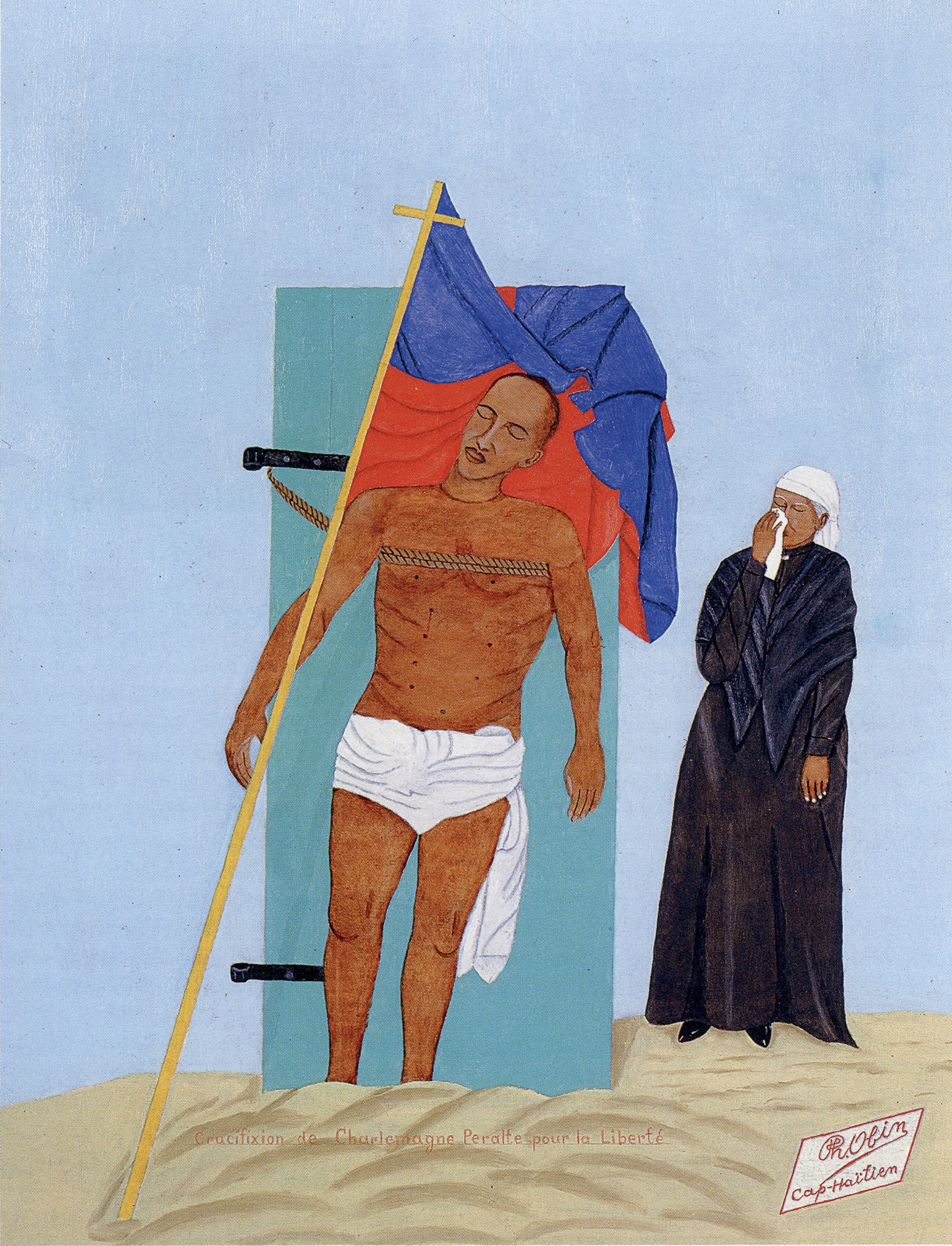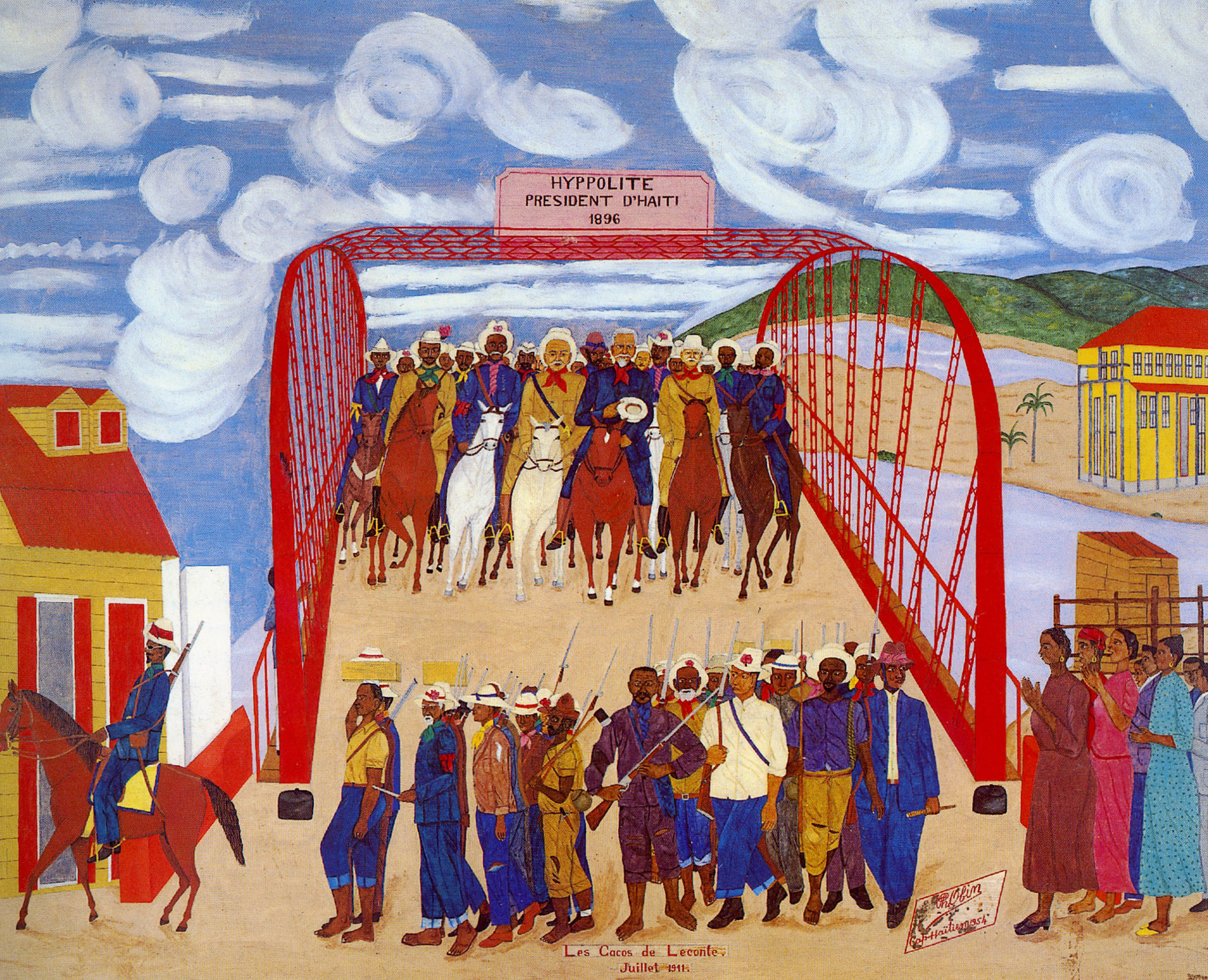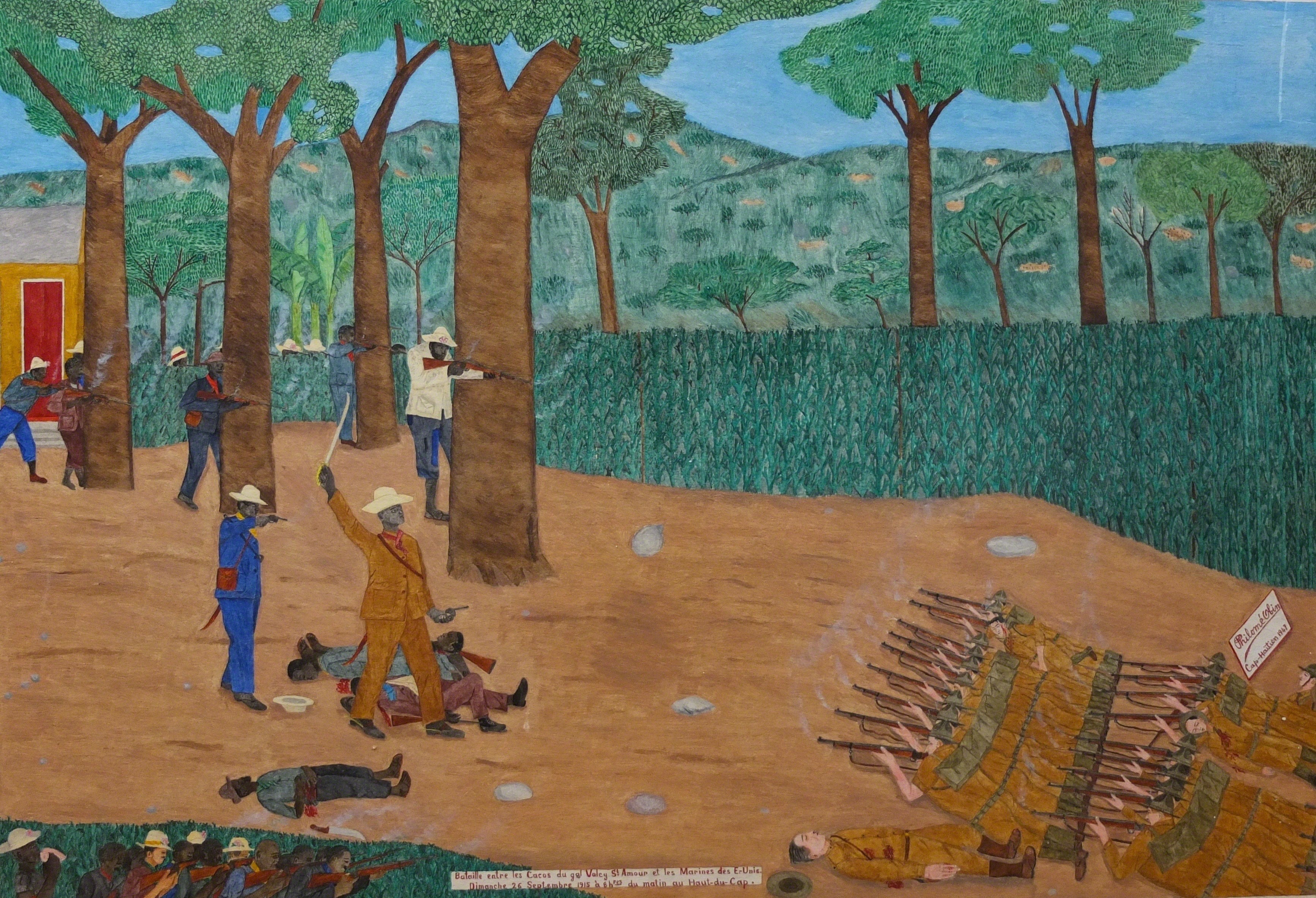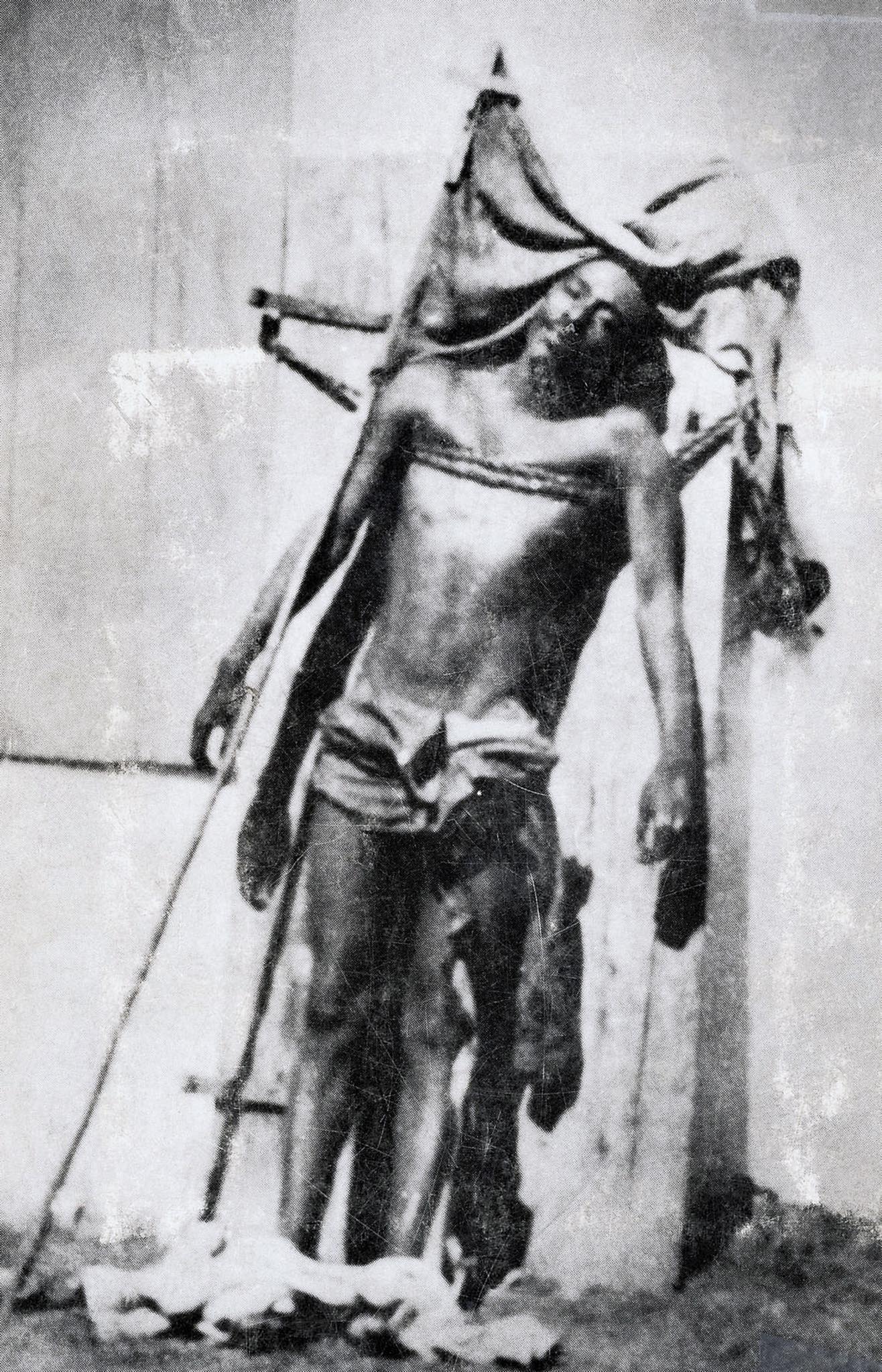Charlemagne Peralte and the Cacos
The United States occupied Haiti from 1915-1934. During the U.S. intervention, Charlemagne Peralte rose as a leader of a Haitian resistance group known as the cacos who positioned themselves as nationalists fighting for Haiti's sovereignty. Under Peralte's direction, the cacos battled the occupying forces and also promoted their cause as a global call for democracy. The United States Marines and their Haitian allies infiltrated Péralte’s camp on October 3rd 1919. Peralt and many cacos were killed in the raid. The Marines displayed Péralte’s body in public to discourage opposition to the occupation. Haitians continued to resist the occupation until it ended in 1934. Though Peralte died in 1919, his significance to Haitians assumed epic proportions, much like Pancho Villa and Emiliano Zapata of Mexico, Augusto Sandino of Nicaragua, and Che Guevera in Cuba.
Philome Obin reinterprets the notorious photograph that was used in the propaganda campaign to quell the resistance.
For further reading: Nationalism & the politics of historical memory: Charlemagne Peralte's rebellion against U.S. occupation of Haiti, 1915-1986" (2011) by Yveline Alexis https://scholarworks.umass.edu/dissertations/AAI3461973/



